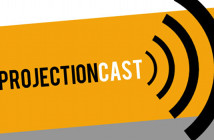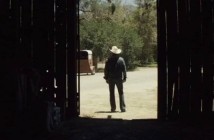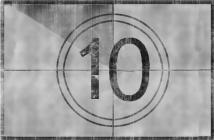
Editor’s Notes: The Hobbit: The Desolation of Smaug is now in theatres; the journey ends with The Hobbit: There And Back Again which opens wide December 17th, 2014.
Peter Jackson filmed his way into a position where he cannot afford to faithfully adapt The Hobbit. Tolkien’s original is a children’s book, full of adventure and wide-eyed wonder. There are hints of the poetic and melancholy sensibility that would later find more developed expression in The Lord of the Rings, but it is essentially a simple tale, about a hobbit, named Bilbo Baggins, who is dragged from his hometown and made to confront the world beyond, next to a group of dwarves looking to reclaim their stolen treasure. After the success of The Hobbit, Tolkien was asked by his publisher to offer a sequel. His initial idea was to prolong the spirit of the first part, but as we now know, the result was epic fantasy, far grander and elegiac in scope than The Hobbit. The Lord of the Rings has overshadowed its predecessor, and when Peter Jackson set out to adapt Tolkien’s universe, he skipped The Hobbit altogether. Now he has gone back to it, after making The Lord of the Rings, and his audience expects more of the same.
The Lord of the Rings has overshadowed its predecessor, and when Peter Jackson set out to adapt Tolkien’s universe, he skipped The Hobbit altogether. Now he has gone back to it, after making The Lord of the Rings, and his audience expects more of the same.
Tolkien, upon conceiving The Hobbit, addressed a virgin audience, in more than one sense. His youthful readers suspected nothing about Middle Earth, as it was entirely new to them. Peter Jackson, however, won his audience through The Lord of the Rings, so his viewers are already schooled on Middle Earth’s lore. Weathered by the adult drama of the previous trilogy, they will not accept a more buoyant tone for The Hobbit. William Blake’s Songs of Experience – to pose an example – were published after his Songs of Innocence, and the same was true of Tolkien’s novelized equivalents. Jackson started with Experience, and he cannot now pretend that Innocence has not been lost. He has to perform a careful balancing act, preserving something of the childlike glee of The Hobbit, for longtime fans of Tolkien, but with an awareness of the darkness and sweep already established by The Lord of the Rings.

During the 1960s, Tolkien actually entertained the idea of considerably expanding The Hobbit, having already added some minor emendations. Characters and objects of limited importance, in the first book, had become crucial in the second. The Necromancer had morphed into Sauron. Gollum’s magical ring had revealed itself to be the Ring of Power, the One Ring to Rule Them All. In the light of The Lord of the Rings, The Hobbit seemed maddeningly incomplete. Yet, Tolkien decided against tampering with his early text. He filled out some of its narrative gaps, but he did it elsewhere, in appendices. Which means his fans can embellish The Hobbit in their minds, while the novel itself remains mostly unaltered. Tolkien, perhaps, realized that its charm depends not only on what it contains but also on what it leaves out (1). It focuses on the journey of a single hobbit, and his point of view is privileged. His itinerary takes him through a mysterious land, which is largely vague outside of his own path. When the wizard Gandalf gallops off to confront the Necromancer, the event is not explained until the very end, and then only because Bilbo is told about it. If Bilbo doesn’t see it or hear it, the novel doesn’t acknowledge it. Bilbo hardly knows anything about Middle Earth, since he has never strayed from his bucolic home, and his ignorance is shared by readers.
Jackson, however, is releasing a trilogy for people familiar with Middle Earth. So, he needs another approach. And he has chosen to fashion it in the mold of The Lord of the Rings: a hobbit goes on a long hike through forests and mountains, while History revolves around him. The problem, however, is that Frodo’s story…
Jackson, however, is releasing a trilogy for people familiar with Middle Earth. So, he needs another approach. And he has chosen to fashion it in the mold of The Lord of the Rings: a hobbit goes on a long hike through forests and mountains, while History revolves around him. The problem, however, is that Frodo’s story, in Tolkien’s second book, is unlike Bilbo’s. Frodo advances towards Mordor to destroy the Ring of Power. He feels lonely on his treacherous mission, even with the help of Sam, and is often oblivious to what occurs outside his purview. Yet, everything that happens, whether or not it involves him directly, reflects back on him: if he falls, so does Middle Earth. Tolkien and Jackson jump back and forth between the fates of Frodo and Sam, on the one hand, and those of Gandalf, Aragon, Merry, and Pippin, on the other, establishing dramatic tension. Neither group knows what the other is doing, but they depend on (and think about) each other (2). Crucially, Frodo is always aware of the importance of his task, and on how heavily his success or failure weighs in everyone’s minds.

Bilbo is different and far more anonymous. Sure, other characters throughout Middle Earth mention the “Halfling” tagging along with the dwarves. But, mostly, they have no idea who he is and no one knows he carries the One Ring. When Jackson, unlike Tolkien, transitions between Bilbo and the dwarves, on the one hand, and various elves, wizards, and orcs, on the other, Bilbo tends to disappear. He is accidentally the bearer of the One Ring, but he doesn’t know it and nor does anyone else. Meanwhile, Legolas, Gandalf, Tauriel, Thranduil, Thorin, Radagast, and even Sauron go about their business. Yes, much of what unfolds is silently ignited by the Ring of Power nestled in Bilbo’s pocket. But since no one is aware of that, Bilbo’s role is only secretly relevant. On a moment-to-moment basis, he’s relegated to the sidelines. Even in terms of pure metrics: more than half of the running time is likely Bilboless. Which is significant, given that The Hobbit is supposed to be his hero’s quest. The Ring of Power was never the centerpiece of Tolkien’s The Hobbit, and Bilbo never realizes what exactly he stole from Gollum. In Jackson’s adaptation, this powerful trinket is given the prominence it deserves, but Bilbo remains an unwitting bearer. Instead of being the protagonist, he has become a kind of incidental vessel for the One Ring. The issue is not that the source novel has been altered. After all, if anyone wants the source novel, they can go read it. Rather, the issue is that structural elements from the original text have been preserved in the film adaptation – namely, Bilbo’s role and purpose – and these no longer function as well in an expanded context.
In Jackson’s adaptation, this powerful trinket is given the prominence it deserves, but Bilbo remains an unwitting bearer. Instead of being the protagonist, he has become a kind of incidental vessel for the One Ring.
All this said, The Desolation of Smaug succeeds at mimicking The Lord of the Rings. After a few hints and winks, in An Unexpected Journey, Sauron is finally established as a concrete adversary, as he moves his pawns across the board of Middle Earth. Jackson’s lengthened narrative scores further points, adding human depth to settlements and races that, in Tolkien, were distant and opaque, since Bilbo was the pivotal observer. The new elven character of Tauriel, played by Evangeline Lilly, is welcome, adding a feminine touch to a largely male cast. The kingdom of the Wood Elves, in general, receives plenty of screen time, and allows for the return of Orlando Bloom as Legolas. After ten years, Bloom is older, and his facial features, despite make-up, are harsher and boxier, more severe and wizened. Narratively, this makes no sense, because he’s supposed to be younger, relative to The Lord of the Rings (if not much so, in elf years). But, alas, Bloom ages in human years, and this benefits his character. He’s rougher and a bit more likable, compared to his previous and more ethereal persona.

Moreover, compared to An Unexpected Journey, the action scenes here are better designed and spread out. As Kristin Thompson mentions, regarding the previous installment: “In the first half of the film, there are roughly fifty-one minutes of quiet scenes and 31 minutes of action. In the second half, the pattern is reversed with a surprising precision. The peaceful scenes run a total of 31 minutes, and the action scenes 48 minutes.” Thus, a string of battles clogs up the concluding segment. Not so much in The Desolation of Smaug. The big set-piece – Bilbo’s meeting with the dragon Smaug – is a lengthy conversation, much like the ‘Riddles in the Dark’ sequence in An Unexpected Journey, in which Bilbo confronts Gollum. Yet, after the ‘Riddles in the Dark’, there is still a long and violent escape through Goblin Town, followed by a standoff against the orc Azog and his hunters, in what functions as a tiresome double climax. In comparison, after the meeting with Smaug, there is an elaborate attempt on the dragon’s life, and then an abrupt (and powerful) cliffhanger of an ending. Yes, there is also Azog’s assault on the dwarves who stayed behind in Lake-town, but it occurs concurrently with the battle with Smaug. At any rate, Jackson better articulates succeeding moments of calm and alarm.
And finally, Benedict Cumberbatch, as Smaug, is what fans were hoping for, and more. His aging dragon, driven mad by isolation and greed, incensed by paranoia, is pathetic and disturbing. He walks over hills of gold, weaving through the entrails of the Lonely Mountain, reiterating his own greatness and strength in stanzas of mad, raving poetry. Bilbo tries to win its favor, play on his delusions of grandeur, and Smaug, without stooping to trust the little hobbit, never deigns to kill him either. The dragon, its neck worming from hall to hall, snaking without purpose or direction, walks over the intruder, as if Bilbo were only a mirage. Gollum, by comparison, is also torn apart by inner demons, in the darkness of his self-imposed imprisonment, but he remains more or less lucid. Smaug, though: his mind has gone.
- (1) Thompson, Kristin. “A hobbit is chubby, but is he off-balance?” 16 January 2013. Observations on film art. At: http://www.davidbordwell.net/blog/2013/01/16/a-hobbit-is-chubby-but-is-he-off-balance/. The key passage is: “In 1960 Tolkien was again disturbed by the differences between the two books and launched into a more thoroughgoing revision of The Hobbit to make it conform exactly to the later events in LOTR. Others convinced him that this was a mistake and that it damaged the charm of the earlier book, already a classic of children’s literature. Eventually he allowed those disparities to remain. He did, however, write passages in the appendices that at least briefly described events that helped stitch the two books’ narratives together.”
- (2) Yes, the cast of characters splinters into more than two groups, but I’m simplifying for clarity’s sake.



